Coccinellidae Checklist: Ladybird Beetles
Ladybirds from the family Coccinellidae Latreille, 1807 are also commonly known as Ladybugs in North America, but are actually not true bugs but beetles. That is why some prefer to use the name ladybird beetles rather than ladybugs to avoid any confusion caused by the misnomer. Ladybirds are one of the few insects that are not actively disliked as they are often seen feeding on aphids and can be pretty useful insects for getting rid of these agricultural pests. However, those in the subfamily Epilachninae do feed on the leaves of certain crops as well.
Etymology
The name “ladybird” originated in Britain because early paintings often portrayed Mary (Our Lady) wearing a red cloak or veil. The most common ladybird in Europe – the seven-spot ladybird (Coccinella septempunctata) – had spots that were said to symbolize her seven joys and seven sorrows. According to an old European legend, farmers prayed to the Virgin Mary asking for help to save them from the pests devouring their crops, and she sent a swarm of tiny beetles bearing her trademark coat to eat them. Hence, this family of insects became known as “Our Lady’s Bird” or what we now know as the Lady Beetle. [1]
Many countries had different names for these beetles, and some had similar references to God, Virgin Mary or cows, perhaps drawing similarities from the cow’s spots. [2]
- Germany: Marienkäfer (Mary’s beetle)
- France: la bete a bon Dieu (good God’s animal)
- Russia: Bozhya korovka (God’s little cow)
- Greece: paschalitsa (little Easter)
- Portugal: joaninha (little Joanne)
- Spain: mariquita (little Maria)
- Wales: buwch goch gota (small red cow)
- Scotland: daolag-bhreac (speckled beetle)
- Slovenia: pikapolonica (spotty bug)
- Argentina: Vaquita de San Antonio (St. Anthony’s small cow)
The family’s scientific name Coccinellidae is derived from the word coccineus in Latin, which means “scarlet”, as the most common ladybirds then were typically brilliant red in colour.
Checklist
This page consists of a personal checklist of all Ladybirds / Ladybugs / Lady Beetles / Coccinellidae that I’ve encountered over the years. Many were identified by Adam Slipinski via Flickr. Some are still not identified, so any assistance on identification will be appreciated!
All photos are of live subjects shot in the field, with the dorsal view selected where available. Click on individual photos for larger views and views from other angles. As specimens were not collected, identifications were done purely based on photographs and may not be 100% accurate.
This post will be updated regularly, please let me know if you spot any mistakes.
View my complete Flickr photo set: Coccinellidae – Ladybirds.
Region Filters
Click on any region to show only records from that region.
Class: Insecta Linnaeus, 1758
Order: Coleoptera Linnaeus, 1758
Family: Coccinellidae Latreille, 1807
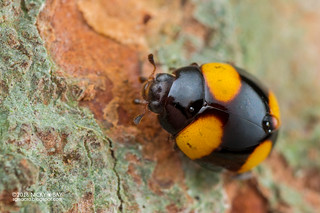
Singapore: Coccinellidae fungus-beetle-mimic

Singapore: Coccinellidae DSC_2195
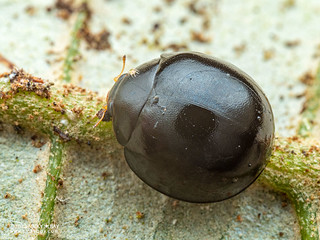
East Malaysia: Coccinellidae P7095659

West Malaysia: Coccinellidae DSC_4235
Subfamily: Coccinellinae Latreille, 1807
Tribe: Coccidulini Mulsant, 1846
Genus: Scymnus Kugelann, 1794
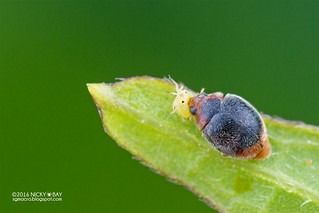
Singapore: cf. Scymnus sp.
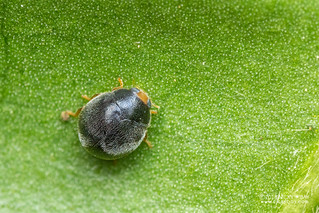
Madagascar: cf. Scymnus sp.
Tribe: Coccinellini Latreille, 1807
Genus: Azya Mulsant, 1850
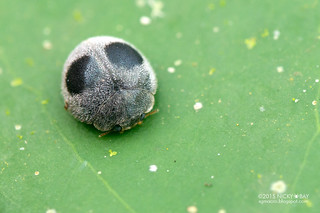
Belize: Azya orbigera Mulsant, 1850
Genus: Cheilomenes Chevrolat, 1837

Thailand: Cheilomenes sexmaculata (Fabricius, 1781)
Genus: Coccinella Linnaeus, 1758

Thailand: Coccinella transversalis Fabricius, 1781

Netherlands: Coccinella septempunctata (Linnaeus, 1758)
Genus: Coelophora Mulsant, 1850

Singapore: Coelophora cf. inaequalis (Fabricius, 1775)

West Malaysia: Coelophora sp. P1219292
Genus: Harmonia Mulsant, 1846

East Malaysia: Harmonia sedecimnotata (Fabricius, 1801)
Genus: Heteroneda Crotch, 1871

Singapore: Heteroneda reticulata Fabricius, 1801
Genus: Hysia Mulsant, 1850

East Malaysia: Hysia endomycina Boisduval, 1835
Genus: Illeis Mulsant, 1850

Singapore: Illeis koebelei Timberlake 1943

East Malaysia: Illeis sp. P3102798
Genus: Microcaria Crotch, 1871
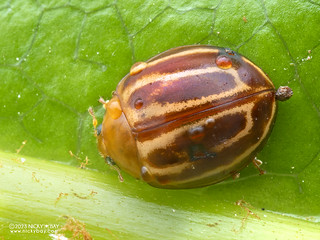
Thailand: cf. Microcaria albolineata (Gyllenhal, 1808)
Genus: Neda Mulsant, 1850

Ecuador: Neda sp. P6154256
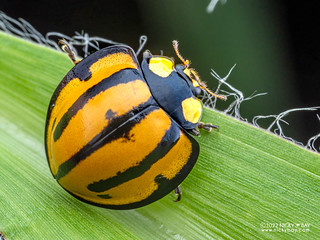
Ecuador: Neda sp. P6154245
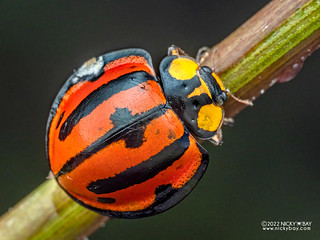
Ecuador: Neda sp. P6154193

Ecuador: Neda sp. P6154136
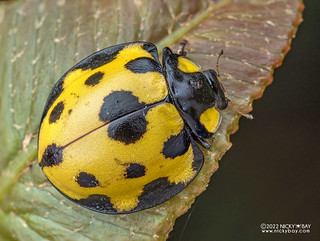
Ecuador: Neda sp. P6067514
Genus: Synonycha Chevrolat, 1837

Indonesia (Kalimantan): Synonycha grandis (Thunberg, 1781)
Tribe: Plotinini Miyatake, 1994
Genus: Ballida Mulsant, 1850

Singapore: Ballida brahamae Mulsant, 1850
Subfamily: Epilachninae Mulsant, 1846
Tribe: Epilachnini Mulsant, 1846
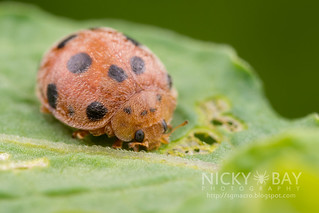
Singapore: Epilachnini? DSC_5871
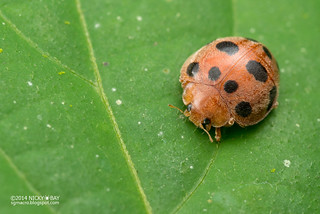
Singapore: Epilachnini? DSC_9187

Singapore: Epilachnini DSC_9041

East Malaysia: Epilachnini DSC_3071

Thailand: Epilachnini P5262667

Mozambique: Epilachnini? DSC_5291
Genus: Epilachna Chevrolat, 1836
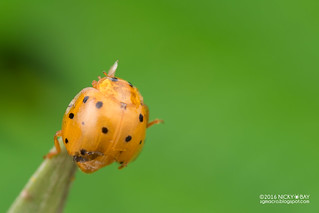
Singapore: Epilachna sp.
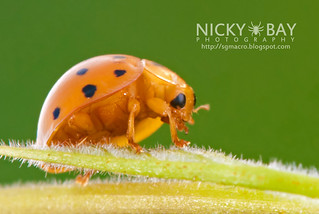
Singapore: Epilachna sp.

Singapore: Epilachna sp.
Genus: Henosepilachna Li, 1961
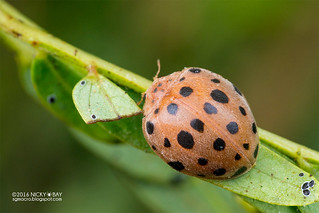
Singapore: Henosepilachna sp. DSC_1755

Indonesia (Sumatra): Henosepilachna sp. PB022981
Genus: Toxotoma Weise, 1899
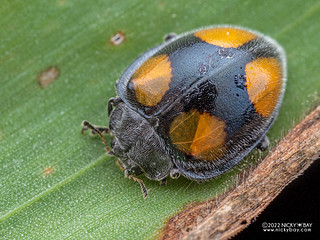
Ecuador: Toxotoma sp. P6067712
Epilachna approximata group
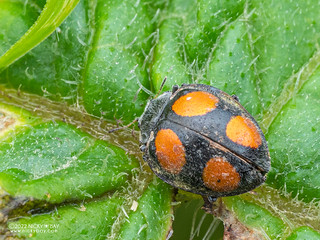
Ecuador: Toxotoma sp. P6144026
Epilachna approximata group
Subfamily: Microweiseinae Leng, 1920
Tribe: Serangiini Pope, 1962
Genus: Serangium Blackburn, 1889

Singapore: Serangium sp.
Subfamily: Ortaliinae Mulsant, 1850
Tribe: Noviini Ganglbauer, 1899
Genus: Rodolia Mulsant, 1850
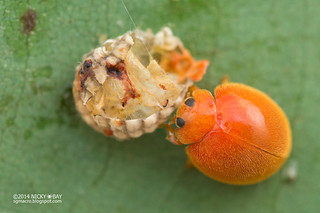
Singapore: Rodolia sp.

West Malaysia: Rodolia sp. DSC_3793
Tribe: Ortaliini Mulsant, 1850
Genus: Amida Lewis, 1896
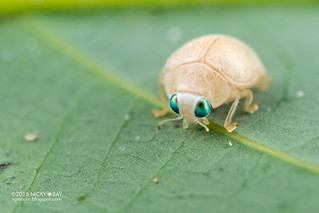
Singapore: Amida sp.
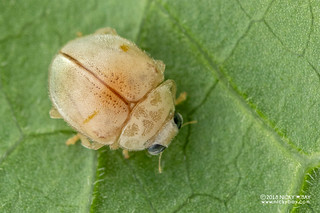
Singapore: Amida sp.
Subfamily: Sticholotidinae Weise, 1901

Singapore: Sticholotidinae P7023945
Tribe: Sticholotidini Weise, 1901
Genus: Chilocorellus Miyatake, 1994
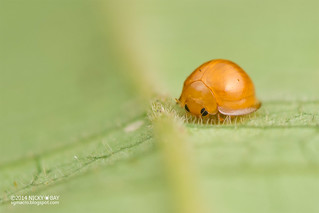
Singapore: cf. Chilocorellus sp.
Genus: Sticholotis Crotch, 1874
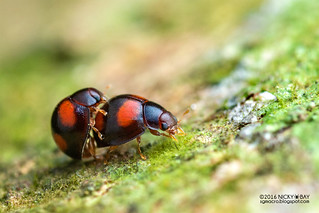
Singapore: Sticholotis sp.
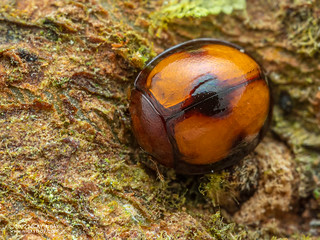
Singapore: Sticholotis sp.
Subfamily: Scymninae Mulsant, 1846
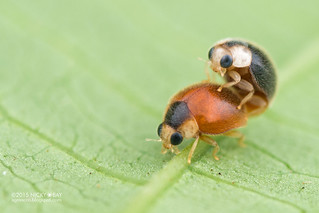
Belize: Scymninae
Tribe: Aspidimerini Weise, 1900
Genus: Cryptogonus Mulsant, 1850

Singapore: Cryptogonus sp. DSC_1864
Tribe: Diomini Gordon, 1999
Genus: Diomus Mulsant, 1850

Singapore: cf. Diomus sp. PC110139
Tribe: Scymnini Mulsant, 1846

Singapore: Scymnini P4307614
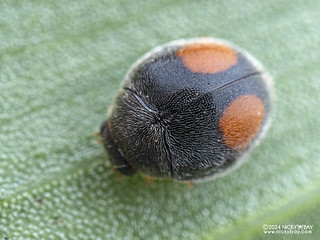
Singapore: Scymnini P1271045
Genus: Sasajiscymnus Vandenberg, 2004

Singapore: cf. Sasajiscymnus sp. P2204692
Genus: Scymnus Kugelann, 1794

Singapore: cf. Scymnus sp.
Larvae
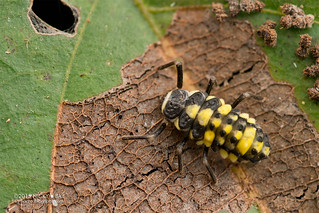
Singapore: Coccinellidae DSC_6417
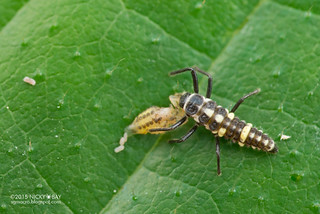
Singapore: Coccinellidae DSC_7386
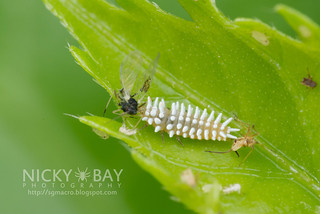
Singapore: Coccinellidae DSC_4350
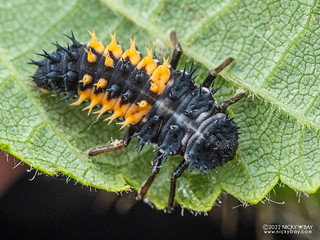
Netherlands: Harmonia axyridis (Pallas, 1773)

West Malaysia: Aspidimerini DSC_7621

East Malaysia: Ortaliini P7095150
Pupae
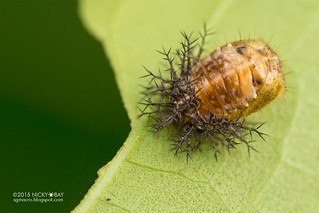
Singapore: Coccinellidae DSC_9972
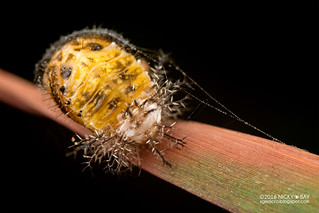
Singapore: Coccinellidae DSC_1816

Singapore: Heteroneda reticulata Fabricius, 1801
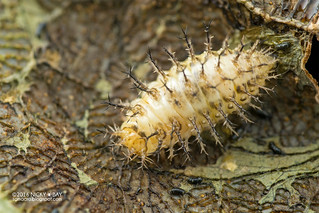
Singapore: Coccinellidae DSC_1798

Netherlands: Harmonia axyridis (Pallas, 1773)
Behavior
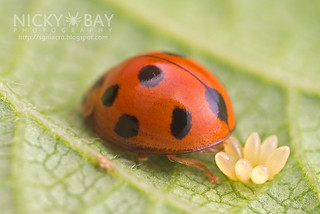
Singapore: Coelophora cf. inaequalis laying eggs
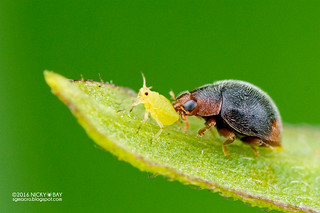
Singapore: cf. Scymnus sp. preying on an aphid
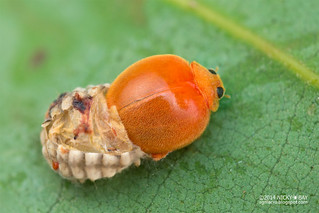
Singapore: Rodolia sp. emergence
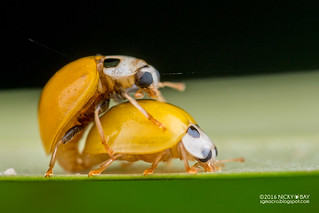
Singapore: Illeis koebelei mating
TAGS

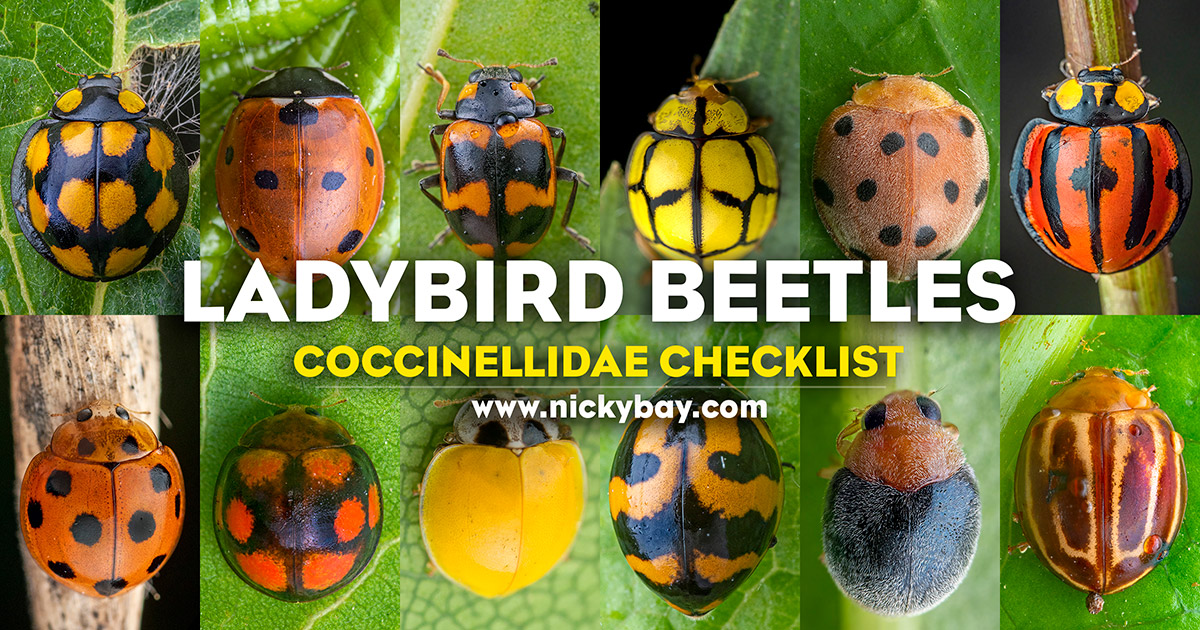







































































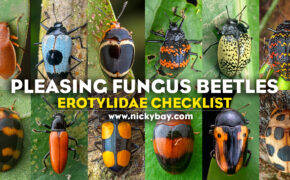
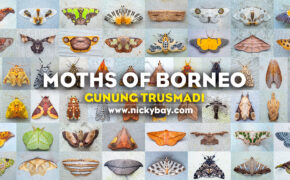
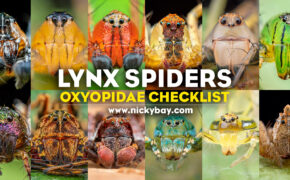












John Apicelli
Thank you for posting your work . I appreciate the thorough and amazing work you do .
Wishing you all good things for 2024 .
JA